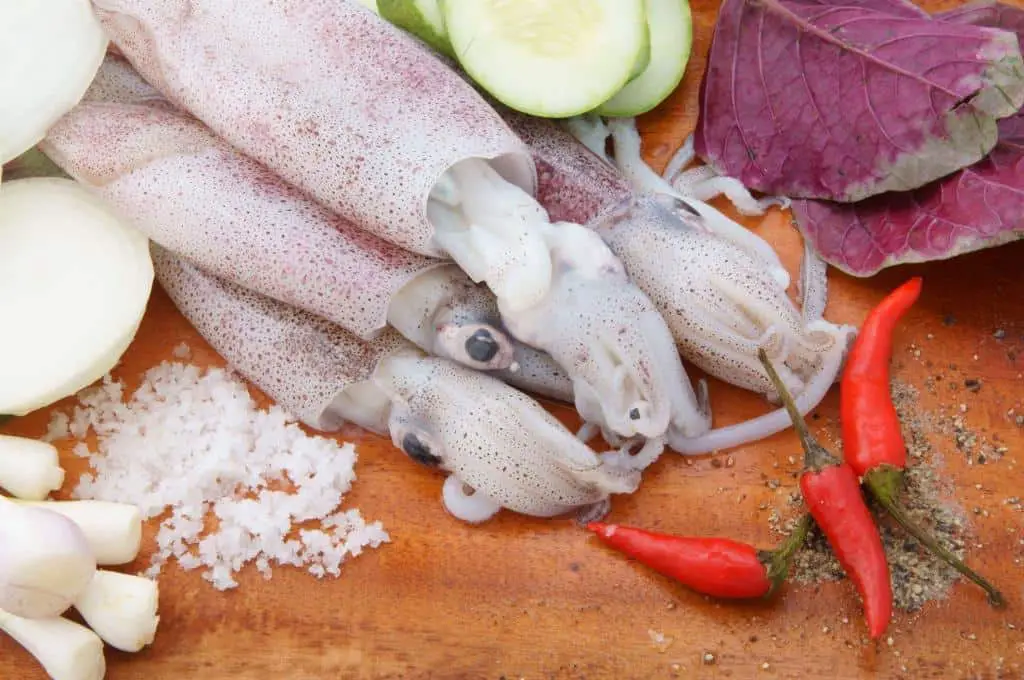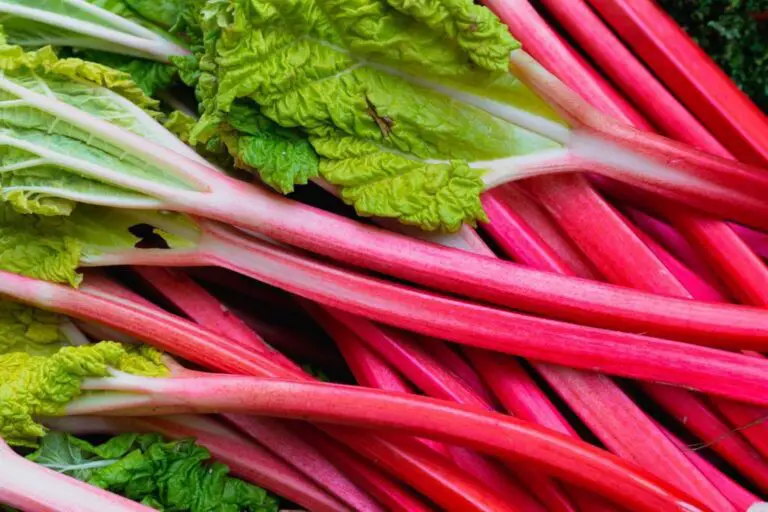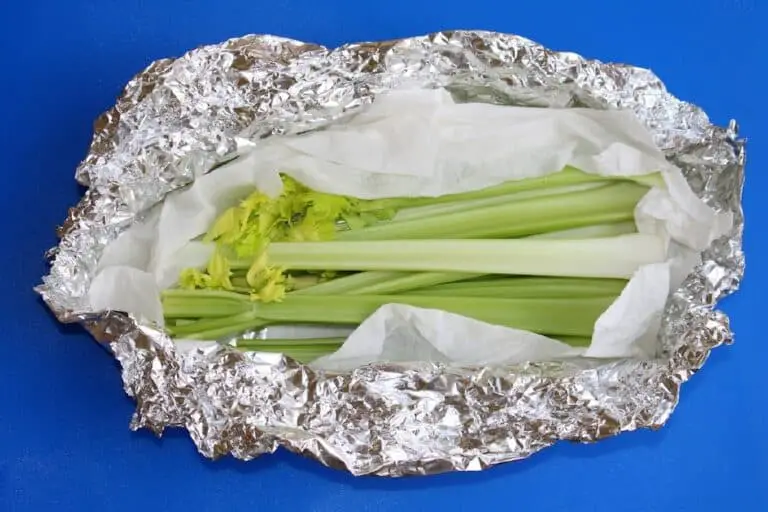Can You Eat Raw Squid? What Part of Squid Do You Eat?

Squid is a well-liked seafood that many people enjoy all over the world. It’s served in various ways, such as grilled, fried, or as sushi. However, with its slimy texture and tentacle-like appearance, some people may wonder if it’s safe to eat raw squid.
When it comes to eating squid, there are various ways to prepare it. Some people may prefer it cooked, while others enjoy it raw. However, eating raw squid comes with some risks, as it can contain harmful bacteria and parasites that can cause foodborne illness. .
In this article, we’ll explore whether or not you can eat raw squid and what part of the squid is commonly consumed.
So, is it safe to eat raw squid, and what part of the squid is can you eat? Let’s find out.
Squid as Food and Dishes
Squid, also known as calamari, is a popular seafood that has been enjoyed as a delicacy by humans for centuries. Squid is a versatile ingredient that can be prepared in a variety of ways and used in various dishes, from sushi to pasta. It is a low-calorie, high-protein food that is also rich in vitamins and minerals, making it an excellent addition to a healthy diet.
One of the most popular ways to enjoy squid is by frying it into crispy calamari rings. The squid rings are typically coated in a light batter and seasoned with salt, pepper, and other spices. These delicious appetizers are often served with a side of marinara sauce, aioli, or other dipping sauces. Squid can also be grilled or baked and served as a main course.
When grilled, the squid develops a smoky flavor that pairs well with a simple marinade of olive oil, lemon juice, and garlic.
Squid is also a popular ingredient in Asian cuisine, particularly in sushi and stir-fry dishes. In sushi, thinly sliced raw squid, also known as “ika,” is often used to add a chewy texture to the rolls. In stir-fry dishes, squid is often cooked with vegetables and a flavorful sauce, such as oyster sauce or soy sauce.
Squid ink, which is derived from the squid’s ink sac, is also used as a flavoring agent in pasta dishes. The ink gives the pasta a unique black color and a subtle seafood flavor.
Can You Eat Raw Squid?
When it comes to eating raw squid, the answer is not as straightforward as a simple yes or no. While some people enjoy consuming raw squid, there are risks involved in doing so.
WARNING
It’s important to note that not all types of squid are safe to eat raw, so it’s important to exercise caution and make sure the squid has been properly prepared before consuming.
In Japan, raw squid sashimi, known as “ika sashimi” is a delicacy that is typically served with soy sauce and wasabi. But this dish is usually made with recently caught squid that has been frozen for a few days to kill any parasites before it is eaten raw.
Raw squid contains a digestive enzyme called “trypsin inhibitor” that can interfere with protein digestion and lead to an upset stomach. Also, squid can be infected with parasites like tapeworms, which can cause very bad stomach problems if eaten.
To reduce the risk of infection, it is recommended to freeze squid for at least 24 hours before consuming it raw. This can kill any potential parasites that may be present in the squid. It is important to note that freezing does not eliminate all types of parasites, so it is still recommended to exercise caution when consuming raw squid.
If you are unsure about consuming raw squid, there are many delicious cooked squid dishes that you can enjoy without worrying about potential health risks.
Squid can be prepared in a variety of ways, including grilling, frying, and boiling. One popular dish is calamari, which is battered and fried squid rings served with a dipping sauce. Another dish is “sotong masak hitam,” a Malaysian squid dish that is cooked in a spicy black sauce. These cooked dishes are a great alternative to raw squid and are just as tasty.
What Part of Squid Do You Eat?
Perhaps you’re new to cooking with squid and you’re wondering what parts of the squid are edible. In general, there are two main parts of the squid that are commonly consumed: the body and the tentacles.
The body of the squid is where you’ll find the bulk of the meat. It’s usually sold cleaned and gutted, with the ink sac and the cartilage removed. The body can be cut into rings or sliced into strips for dishes such as calamari or stir-fry. The meat of the squid is tender and slightly sweet, with a mild flavor that pairs well with a variety of seasonings and sauces.
The tentacles of the squid are also edible and are often served alongside the body meat. The tentacles have a chewy texture and a slightly stronger flavor than the body meat. They can be cooked whole or cut into smaller pieces and added to dishes such as paella or seafood stew. Some people also enjoy the tentacles as a snack, either fried or grilled and served with a dipping sauce.
It’s worth noting that some parts of the squid, such as the beak and the eyes, are not edible and should be removed before cooking. Additionally, squid can sometimes contain a hard, plastic-like “pen” that provides support to the body. This should also be removed before cooking. With a little bit of preparation, squid can be a delicious and unique addition to your seafood repertoire.
What Do Raw Squid Taste Like?
If you’re considering trying raw squid for the first time, you’re probably wondering what it tastes like. The taste of raw squid can be described as delicate, slightly sweet, and briny. The texture of raw squid is soft and slightly chewy, with a subtle crunch that comes from the suction cups on the tentacles.
The species of squid, the squid’s quality, and the way it is prepared are just a few variables that affect the flavor of raw squid. Some types of squid are milder in flavor, while others have a stronger, more pronounced taste. The freshness of the squid is also an important factor in the flavor. When squid is extremely fresh, it has a delicate sweetness and a subtle oceanic flavor that are highly sought after in Japanese cuisine.
In terms of preparation, raw squid can be enjoyed in a variety of ways. In Japan, raw squid sashimi is a popular delicacy that is often served with soy sauce and wasabi.
Some people also enjoy raw squid in salads or as a topping on sushi rolls. When eaten raw, squid is often sliced very thinly to enhance the delicate texture and flavor.
How Can You Tell if a Squid Is Undercooked?
Undercooked squid can be dangerous as it can cause food poisoning due to harmful bacteria that can still be present in the squid. It is therefore essential to know how to tell if a squid is undercooked to ensure that it is safe to eat.
One way to tell if a squid is undercooked is by its texture. Properly cooked squid should be firm, slightly chewy, and not slimy. If the squid feels soft or slimy, it may be undercooked. Additionally, if the squid is gritty, it may not have been cleaned properly, which can also be a sign of undercooking.
Another way to tell if a squid is undercooked is by its appearance. Properly cooked squid should have a golden-brown color on the outside and a pearly white color on the inside. If the squid is still translucent or has a pinkish color, it may be undercooked. Additionally, if there is any remaining ink inside the squid, it may not have been cooked thoroughly.
Finally, the most reliable way to tell if a squid is undercooked is by checking its internal temperature. The recommended internal temperature for cooked squid is 145°F (63°C). Use a meat thermometer to check the internal temperature of the squid in the thickest part. If it has not reached the recommended temperature, it may still be undercooked and pose a risk of food poisoning.
How to Safely Consume Raw Squid
Raw squid is a delicacy in many parts of the world, but it’s important to take certain precautions when consuming it to avoid foodborne illness. Here are some tips on how to safely consume raw squid:
- Choose the Right Squid: When purchasing squid, ensure that it’s fresh and from a reputable seafood market. Some species of squid are safer to eat raw than others, so it’s important to ask the seller if the squid is safe to eat raw.
- Proper Cleaning: Clean the squid thoroughly and remove any ink or debris before preparing it for consumption. Use a separate cutting board and utensils to avoid cross-contamination with other foods.
- Use Safe Preparation Techniques: Always use clean hands and utensils when handling raw squid. Cut the squid into thin slices for sashimi or other raw preparations. Do not eat the internal organs of the squid as they can be dangerous if not properly cleaned.
- Store Properly: After preparation, store the raw squid in the refrigerator at a temperature of 40°F or below. If you’re not planning to eat it right away, you can also freeze it for later use. Ensure that the squid is wrapped tightly in plastic wrap or aluminum foil before placing it in the freezer.
- Be Aware of Health Risks: Raw squid can contain harmful bacteria or parasites that can cause foodborne illness. Always monitor your health after consuming raw squid, and seek medical attention if you experience any symptoms of illness such as nausea, vomiting, or diarrhea.
By following these simple steps, you can safely enjoy the unique taste and texture of raw squid without putting your health at risk. Whether you prefer it as sashimi, in salads, or as a topping on sushi, raw squid can be a delicious and exotic addition to your culinary repertoire.
Can You Get Food Poisoning From Squid?
Many people enjoy squid as a delicious seafood, but some may wonder if it can lead to food poisoning. The short answer is yes. Squid can carry harmful bacteria that can cause foodborne illness if not handled and cooked properly.
One of the primary causes of food poisoning from squid is a bacteria called Vibrio parahaemolyticus. This bacteria is found naturally in seawater and can infect squid when they are caught and prepared. If the squid is not properly stored or cooked, the bacteria can multiply and cause illness when consumed. Symptoms of a Vibrio parahaemolyticus infection include diarrhea, vomiting, abdominal cramps, and fever.
Another potential cause of food poisoning from squid is contamination with other harmful bacteria, such as Salmonella or E. coli. These bacteria can come from improper handling or processing of the squid, as well as cross-contamination with other foods in the kitchen. These types of infections can cause a wide range of symptoms, from mild stomach pain to more serious problems like kidney failure.
To avoid food poisoning from squid, make sure that the squid is properly handled and cooked. Squid should be stored at a safe temperature, either in the refrigerator or freezer, until it is ready to be cooked. When cooking squid, it should be cooked to an internal temperature of 145°F to kill any harmful bacteria.
It is also important to properly clean and disinfect all utensils and surfaces that come into contact with the squid to prevent cross-contamination with other foods.






